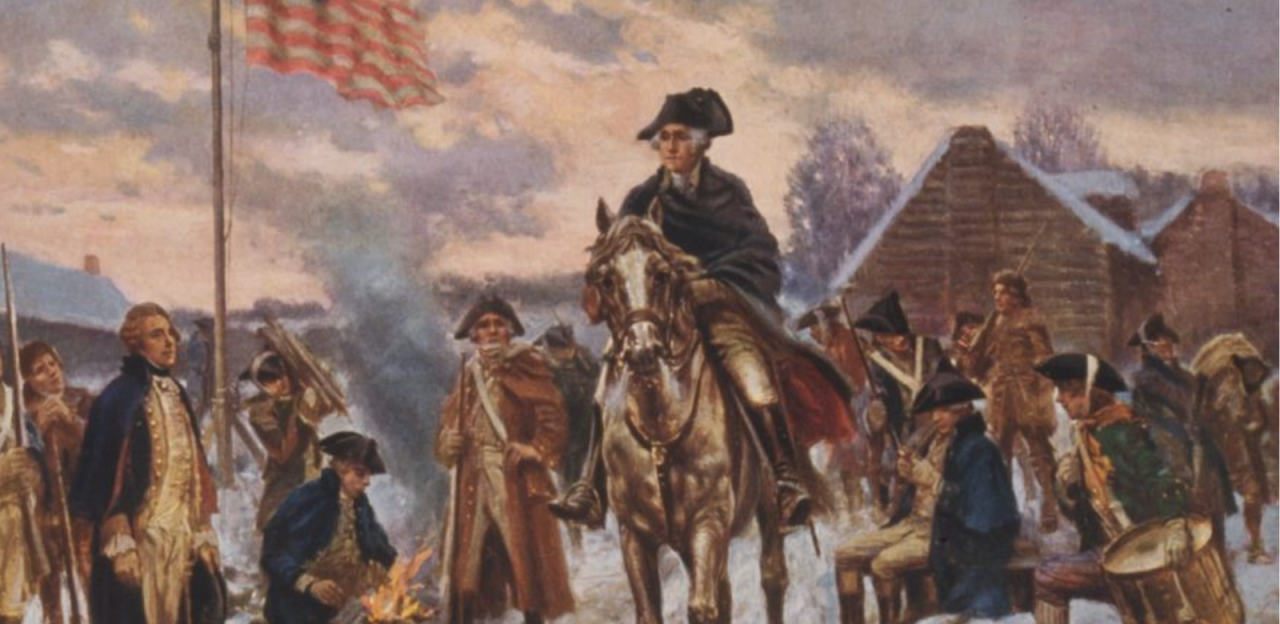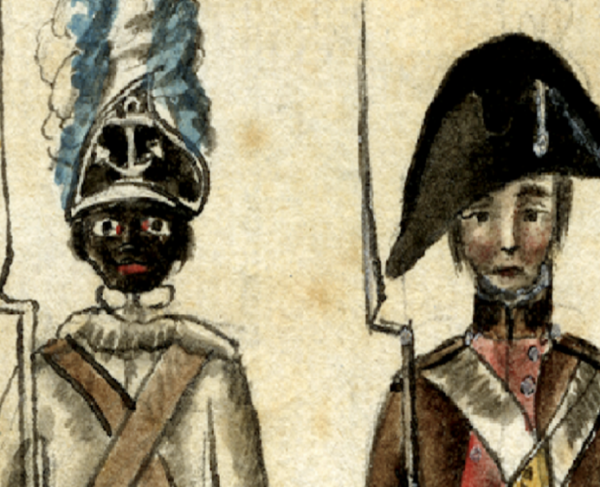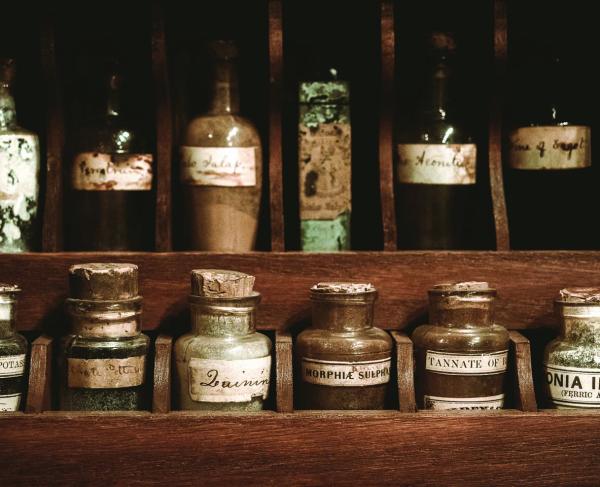Washington's Encampment at Morristown, New Jersey and the "Hard Winter" of 1779-1780

While the Continental Army’s encampment at Valley Forge in the winter of 1777-1778 is one of the most well-remembered events in American history, Washington’s encampment in Morristown, New Jersey in the winter of 1779-1780 marked another major milestone of the Revolutionary War. The Continental Army camped at Morristown for a roughly six-month span from December 1, 1779 to June 22, 1780. Patriot reinforcements under a French commander, the Count d’Estaing, failed to recapture the city of Savannah, Georgia, or make significant progress along the eastern coast in the summer of 1778. In the north, British forces had remained close to New York in the wake of their evacuation from Philadelphia in the same year, creating a stalemate between the Redcoats and the main body of the Continental Army. By 1779, the tide of war began to shift to the southern colonies. The bulk of Washington’s Army, however, remained in the North, and in the winter of 1779-1780, Washington selected Morristown, New Jersey as the location for his troops’ winter encampment.
Located between New York and Philadelphia, Morristown, New Jersey provided a strategic location for Washington's Army to make camp. The town was a center for local farming mining, and timber, which would later provide Washington’s Army with necessary resources to build winter shelters. As Washington wrote to Congress, a camp near Morristown provided a location “compatible with our security which could also supply water and wood for covering and fuel.” This was not the first time Washington and his men camped in the Morristown area. Washington had selected Morristown for the Continental Army’s camp in the winter of 1776-1777, following the Patriot victories at Trenton and Princeton. During that winter, Washington went to work inoculating the army and many of the civilians living in and around the town in order to combat the threat of a smallpox epidemic.
After marching into Morristown in December of 1779, Washington’s troops settled in a mountainous region nearby called Jockey Hollow. The Continental soldiers cut down thousands of acres of timber to construct a “log house city” of more than a thousand wooden structures which accommodated about twelve men each. The site also included parade grounds and officers’ quarters. An estimated 10-12,000 soldiers camped at Morristown, although desertions and deaths reduced the number to only about 8,000, and Washington claimed that as many as one third of these troops were unfit for duty. In spite of the factors working in the site’s favor, the conditions at Morristown would ultimately prove even harsher and more difficult to endure than those at Valley Forge several years before.
While camped at Morristown, Washington had his headquarters in the home of Colonel Jacob Ford, Jr. and his wife, Theodosia. During his time at the Ford Mansion, Washington chronicled the intense cold to which he and his troops were exposed, describing the winter as “intensely cold and freezing.” Martha Washington joined her husband at Morristown in early spring. While the residence was larger than the Potts House in which Washington had his headquarters at Valley Forge several years before, the Washingtons shared the home with Mrs. Ford and her children, as well as both families’ servants, Washington’s aides de camp, and any visitors, making for a crowded space. It was from the Ford’s home that Washington worked to overcome the many challenges his army faced during the winter of 1779-1780.
Extreme cold proved to be one of the army’s greatest trials during the winter at Morristown. Though Valley Forge is remembered for its harsh conditions, that winter in Morristown, Washington’s troops faced even bitterer cold than they had witnessed in Pennsylvania a few years before. Known as “the hard winter,” the season bridging the end of 1779 and early 1780 proved to be one of the coldest on record. Morristown received twenty-eight snowfalls during the Continental Army’s residence there, adding to the miserable conditions the troops faced in the wake of the shortages of food and supplies. In early January, there was a blizzard that lasted for two days, leaving 4 feet of snow in its wake. The temperature often remained below freezing, and snowdrifts piled up as soldiers struggled to keep warm with their scanty clothes and blankets. The challenges the freezing temperatures presented were only aggravated by the army’s serious lack of food and supplies. Shoes, shirts, and blankets were scarce, making conditions even more bleak as soldiers sought to fend off hunger and cold.
Shortages of food and other provisions also posed a constant challenge for the army at Morristown. Fresh meat was usually unavailable, and shortages of flour often made bread scarce. Washington noted that the soldiers sometimes went “5 or Six days together without bread, at other times as many days without meat, and once or twice two or three days without either.” According to some sources, soldiers were so desperate for food that they ate tree bark, leather from old shoes, or even dogs, a situation made worse by the fact that Morristown was located amidst numerous local farms. Despite their proximity to the farmland, however, drought had created shortages in the harvest seasons before, and farmers were often unwilling to give up their crops to feed soldiers. Many farmers had cut back the number of acres they were cultivating as the war progressed. This was due to the poor prices the Continentals offered for goods. The inclement weather added to the difficulty in transporting available supplies to the army. Community members’ reticence to offer their support to the Continental Army provided a constant source of frustration for the Commander-In-Chief. Though Washington was loathe to anger locals by allowing his troops to pillage their farms and fields, he eventually permitted the confiscation of grain and cattle from nearby properties to keep his troops from starving.
During the Revolution, the Continental Congress delegated the responsibility of supplying the army with materials and provisions to the thirteen colonies, which oftentimes resulted in empty commissaries. In a Circular Letter to the States, written on December 16, 1779, Washington recounted that “The situation of the Army with respect to supplies is beyond description alarming, it has been five or six Weeks past on half allowance, and we have not three days Bread or a third allowance on hand nor any where within reach.” Washington voiced his concerns regarding the shortages of food, supplies, and pay for the army, detailing the absence of adequate rations and funds for acquiring necessary provisions. According to Washington, the Army had “never experienced a like extremity at any period of the War,” signifying his distress over the conditions his troops faced. He expressed his fears that without relief, “the Army will infallibly disband in a fortnight.” Some historians suggest that this experience with the thirteen colonies during the Revolution influenced Washington’s advocacy for a more centralized Federal government during the Constitutional Conventions of the late 1780s.
Financial problems presented another source of difficulty for the Continental Army during the winter encampment at Morristown. Following a significant depreciation of colonial currency, the Continental Army struggled to find the funds to transport supplies, send messages, or even buy local provisions, whose sellers were hesitant to accept the colonial currency that frequently fluctuated in value. Many soldiers had not been paid for months, adding to their frustrations and increasing the risk that they would desert or choose not to continue supporting the war effort. Soldiers’ wages were often five to six months late, making it difficult to attract new recruits, secure reenlistments, or retain officers who were unable to support their families at home on minimal pay. This only added to Washington’s concerns about the fate of his army.
Worries about mutinies, desertion, and a British attack against the vulnerable Continental Army plagued Washington throughout the encampment at Morristown. In the spring, regiments from the Connecticut Line staged a mutiny in the camp, retaliating against the delayed wages and shortages of basic supplies. Though the small insurrection was quickly put down, it provided a stark reminder of the army’s dissatisfaction and demoralized state.
The Continental Army also saw several important personal and political developments while encamped at Morristown. On December 23, 1779, Benedict Arnold, who would later become the most notorious traitor of the Revolution, was court-martialed in Morristown, where he was tried for abusing his power as an army officer for financial gain. In May of 1780, the Marquis de Lafayette returned to the United States and reunited with Washington at the Morristown encampment. After spending the previous year persuading France’s king to support the Revolution, the Marquis rejoined the Continental Army bearing good news – the French would send a second fleet of ships across the Atlantic to assist the Patriot forces. The encampment at Morristown also proved significant for Washington’s right-hand man, Alexander Hamilton, who met Elizabeth Schuyler, his future wife, that winter.
Much like Valley Forge, the winter encampment at Morristown, New Jersey became an important symbol of patriotism and persistence in the American Revolution. In perhaps the most severe winter encampment of the war, Patriot forces held together, in spite of conditions that threatened to tear the army apart. In the winter of 1779-1780, the Continental Army’s perseverance and determination to overcome the challenges they faced prepared them for the campaigns that would eventually secure American Independence.


